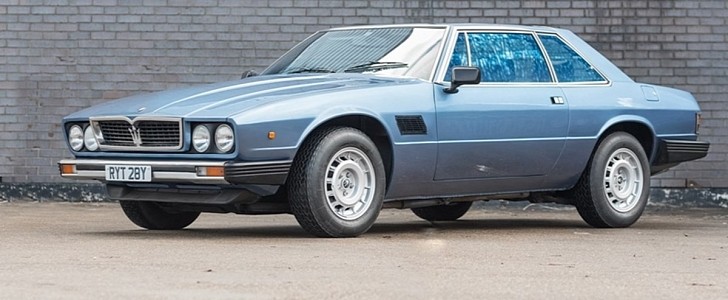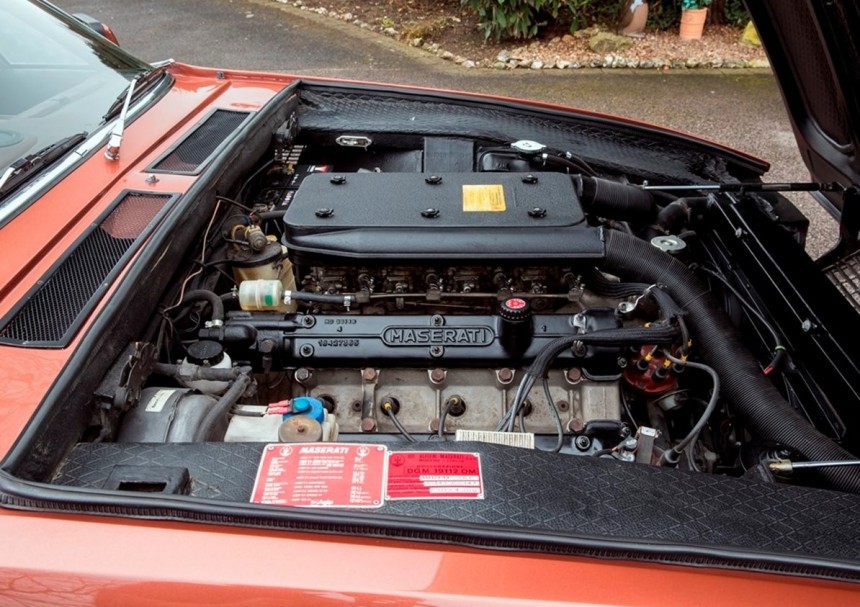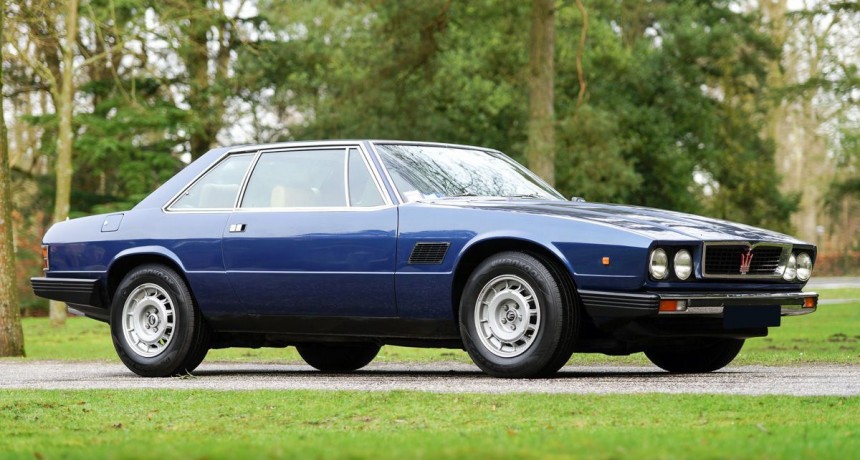In August 1975, the House of the Trident was purchased by Argentinian industrialist Alejandro de Tomaso and state-owned holding company GEPI. The first model developed in this era is the Kyalami, named after the circuit where a Maserati-engined Cooper had won the ‘67 GP.
In the aftermath of the Oil Crisis, the 1970s were a period of economic turmoil and social unrest in the Italian Republic. Colloquially referred to as the Years of Lead, this period wasn’t particularly good for the Modena-based manufacturer founded by the Maserati brothers in 1914 in Bologna.
Due to abysmal sales and a sense of stagnation, de Tomaso decided to dismiss chief engineer Giulio Alfieri. He was central to for more than two decades. For example, he oversaw the development of Maserati’s first mass-produced car, the 3500 GT we’ve covered in detail in a previous article.
With the help of American dollars from the Ford Motor Company, de Tomaso developed three models: the Pantera, the Deauville, and the visually challenged Longchamp. The latter is a short-wheelbase take on the Deauville, and it also served as the basis of the Kyalami. Penned by the amazing Pietro Frua, the Maserati-branded gran turismo is rocking the very same chassis as the Longchamp, yet it’s decidedly different in many other respects.
Take, for instance, the powerplant. Alfieri’s legacy lives on in the engine bay of the Kyalami, where you’ll find 4.2- and 4.9-liter V8 engines based on the 4.2 that premiered in the Quattroporte. Those lumps are derived from the 4.9-liter V8 used in Maserati’s first V8 road-going car, the 5000 GT.
Obviously more desirable than the 351ci Ford Cleveland engine in the Longchamp, the Tipo AM 107.21.42 cranks out 266 horsepower at 6,000 revolutions per minute and 289 pound-feet (392 Nm) at 3,800 rpm. The only transmission available was a five-speed manual gearbox, the ZF S5-24-3.
Torque is unchanged for the Tipo AM 107.23.49, although it peaks earlier at 3,000 revolutions per minute. The larger engine also happens to be more potent by 10 horsepower for a grand total of 276 ponies at 5,600 rpm. The 4.9-liter Kyalami came standard with a BorgWarner three-speed automatic rather than the Ford C6 of the Longchamp. The ZF manual was optional.
Tipping the scales at 1,670 kilograms (3,682 pounds), this half-breed needs just over 7 seconds to reach 100 kilometers per hour (62 miles per hour). If you keep your right foot planted on the accelerator pedal, the speedometer needle will eventually go to 240 kilometers per hour (148 miles per hour).
An indirect replacement for the Mexico that we’ve also covered in a previous write-up, the Kyalami was unveiled in November 1976 at the Turin Motor Show alongside a prototype for the third-generation Quattroporte.
Riding on a 2,600-millimeter wheelbase, the 2+2 grand tourer is a unibody like the Mexico before it. Double wishbones up front, an independent rear axle with hydraulically-assisted inboard brakes featuring 286-millimeter discs, 15- by 7.5-inch magnesium wheels from Campagnolo, Michelin XDX tires, power steering, and two fuel tanks also need to be mentioned.
Gifted with either Weber 40 DCNF-6 or 42 DCNF-6 depending on the displacement, the Maserati V8 flaunts two valves per cylinder, an 8.5:1 compression ratio, and a single distributor supplied by Magneti Marelli. Both displacements feature alloy blocks and heads. We also need to highlight DOHCs that allow the Tipo 107 to rev higher than the 351C.
From a visual standpoint, it’s easy to identify the Kyalami through its circular headlights rather than the Ford Granada-sourced rectangular units of the Longchamp. Fabricated entirely from steel, the Mazza is tastefully appointed with Connolly leather upholstery and “mousehair” on the dash.
Standard features also include air conditioning, electric windows, as well a power driver-side mirror. Only 200 units were produced in total, split between 125 examples with the 4.2 and 75 cars with the 4.9-liter engine.
Due to abysmal sales and a sense of stagnation, de Tomaso decided to dismiss chief engineer Giulio Alfieri. He was central to for more than two decades. For example, he oversaw the development of Maserati’s first mass-produced car, the 3500 GT we’ve covered in detail in a previous article.
With the help of American dollars from the Ford Motor Company, de Tomaso developed three models: the Pantera, the Deauville, and the visually challenged Longchamp. The latter is a short-wheelbase take on the Deauville, and it also served as the basis of the Kyalami. Penned by the amazing Pietro Frua, the Maserati-branded gran turismo is rocking the very same chassis as the Longchamp, yet it’s decidedly different in many other respects.
Take, for instance, the powerplant. Alfieri’s legacy lives on in the engine bay of the Kyalami, where you’ll find 4.2- and 4.9-liter V8 engines based on the 4.2 that premiered in the Quattroporte. Those lumps are derived from the 4.9-liter V8 used in Maserati’s first V8 road-going car, the 5000 GT.
Torque is unchanged for the Tipo AM 107.23.49, although it peaks earlier at 3,000 revolutions per minute. The larger engine also happens to be more potent by 10 horsepower for a grand total of 276 ponies at 5,600 rpm. The 4.9-liter Kyalami came standard with a BorgWarner three-speed automatic rather than the Ford C6 of the Longchamp. The ZF manual was optional.
Tipping the scales at 1,670 kilograms (3,682 pounds), this half-breed needs just over 7 seconds to reach 100 kilometers per hour (62 miles per hour). If you keep your right foot planted on the accelerator pedal, the speedometer needle will eventually go to 240 kilometers per hour (148 miles per hour).
An indirect replacement for the Mexico that we’ve also covered in a previous write-up, the Kyalami was unveiled in November 1976 at the Turin Motor Show alongside a prototype for the third-generation Quattroporte.
Gifted with either Weber 40 DCNF-6 or 42 DCNF-6 depending on the displacement, the Maserati V8 flaunts two valves per cylinder, an 8.5:1 compression ratio, and a single distributor supplied by Magneti Marelli. Both displacements feature alloy blocks and heads. We also need to highlight DOHCs that allow the Tipo 107 to rev higher than the 351C.
From a visual standpoint, it’s easy to identify the Kyalami through its circular headlights rather than the Ford Granada-sourced rectangular units of the Longchamp. Fabricated entirely from steel, the Mazza is tastefully appointed with Connolly leather upholstery and “mousehair” on the dash.
Standard features also include air conditioning, electric windows, as well a power driver-side mirror. Only 200 units were produced in total, split between 125 examples with the 4.2 and 75 cars with the 4.9-liter engine.
































